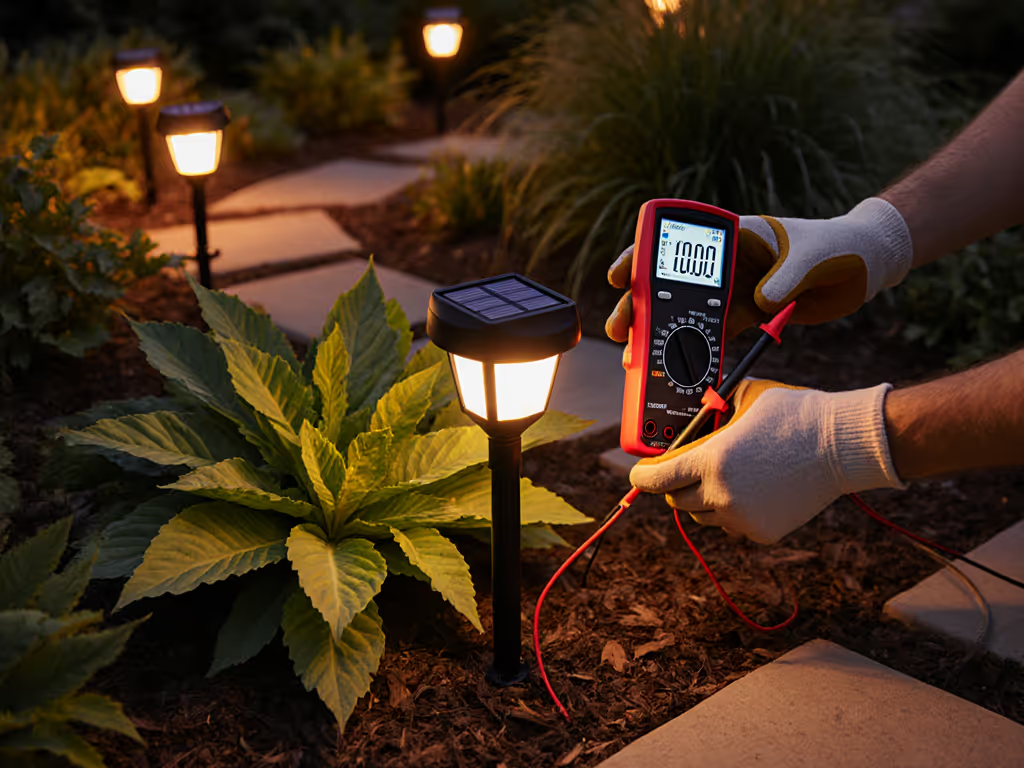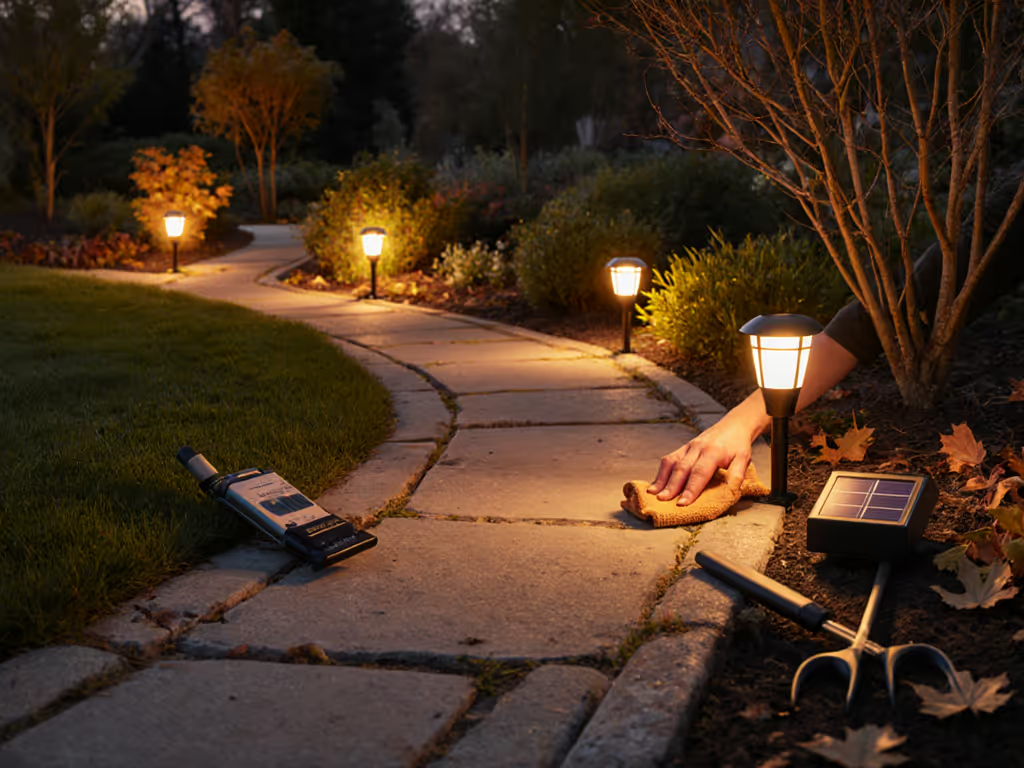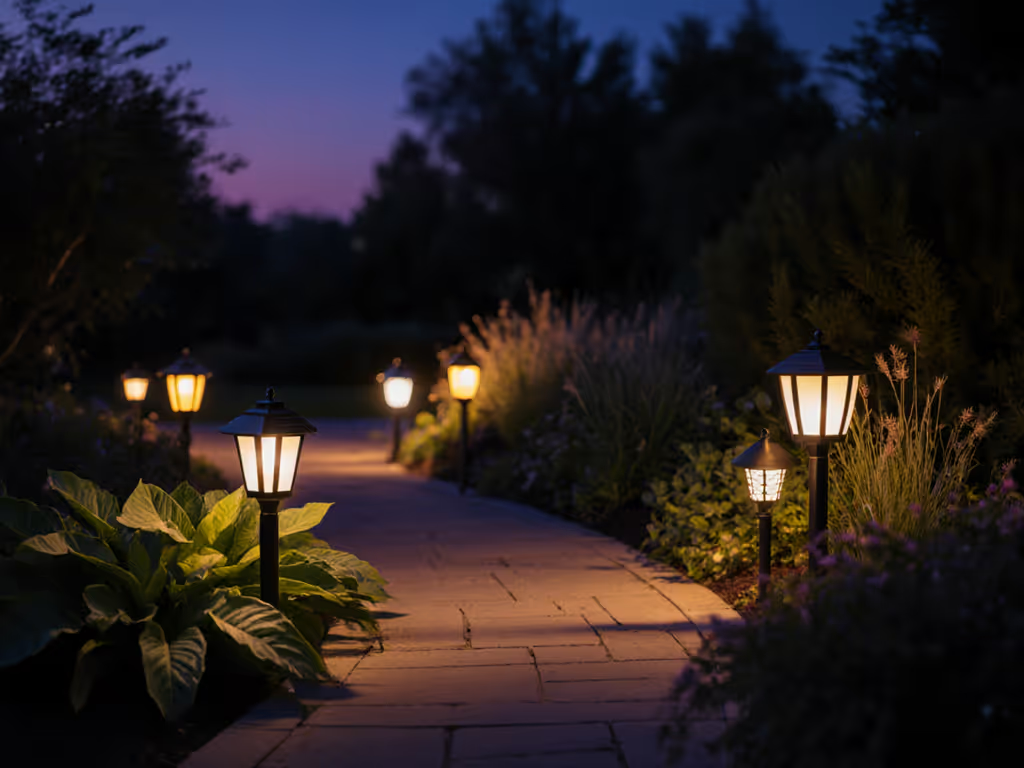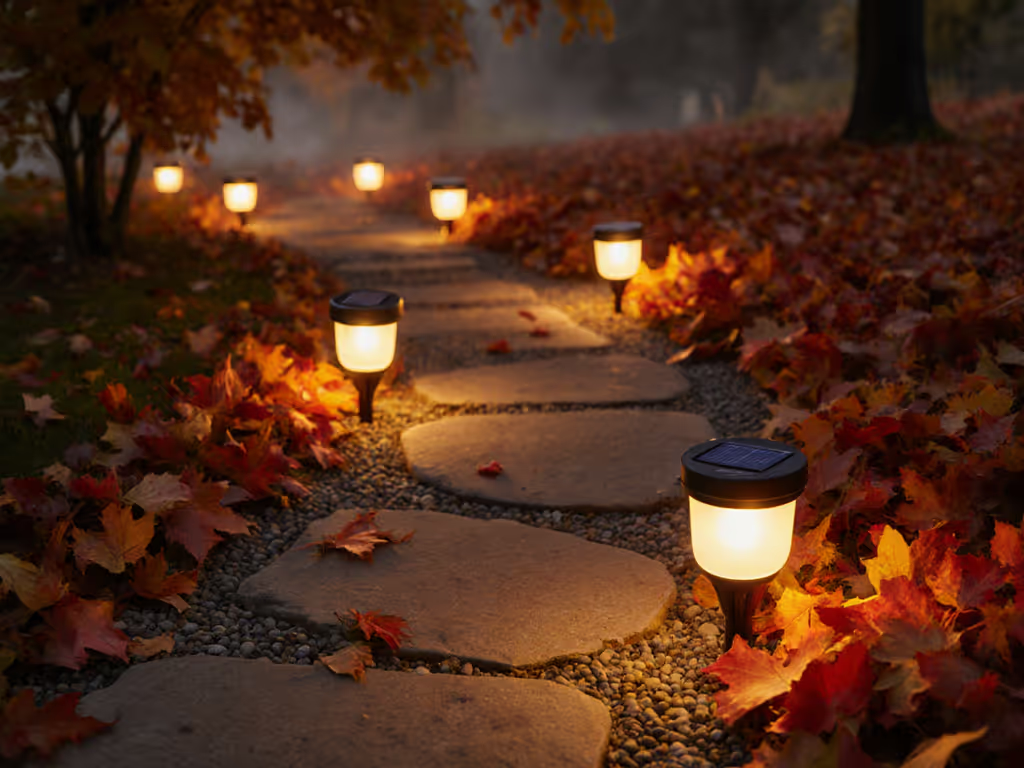There's a quiet magic when garden lighting feels like an extension of the landscape itself, where solar light maintenance becomes second nature and your seasonal garden lighting care preserves that delicate balance between illumination and darkness. I remember the crisp October evening when my neighbor lingered near my front path, remarking how she could finally see the stone steps without squinting, hear the crickets without competing glare, and enjoy our conversation without the harsh stare of artificial light. That moment cemented my philosophy: beautiful light hides the source. When we shape light with intention (curating beam angles, embracing warmth, and respecting the night), we create spaces that breathe rather than announce themselves. Edges soft, sources hidden.
Let the garden glow, never the fixture staring back.
Spring: Awakening Your Solar Garden Lights
After winter's dormancy, your solar fixtures may emerge sluggish or unresponsive. Rather than replacing them prematurely, approach spring cleaning with the same gentleness you would use when pruning early blossoms. Begin with the panels: wipe them at dawn with a microfiber cloth dipped in lukewarm water mixed with a drop of mild dish soap. Avoid abrasive tools, as scratches compromise efficiency just as permanently as broken branches compromise tree health. Pay special attention to the light sensor, a small dark dot usually beneath the panel; a clean sensor ensures your lights respond accurately to twilight's subtle shifts.
Check your battery replacement schedule. For climate-specific advice on NiMH vs lithium performance and replacement options, see our solar light battery guide. If your lights dim after dusk or fail to reach full brightness, corrosion may be sapping energy. Look for white powder around battery contacts (a sign of leakage). Gently clean contacts with a cotton swab dipped in vinegar before replacing batteries with NiMH (nickel-metal hydride) types, which tolerate temperature fluctuations better than alkalines. Trim back any new growth that casts shade during morning sun hours; remember that even partial coverage dramatically reduces charging capacity.
As you assess your garden's evolving layout, consider whether last season's placements still serve your needs. Shift fixtures to capture maximum sunlight without sacrificing the subtle ambiance that makes your space welcoming. This is the perfect time to verify that housings remain watertight. Press the lids closed firmly and inspect rubber gaskets for cracks that could invite moisture during summer rains.
Summer: Nurturing Through Peak Sunlight
While abundant sunlight seems ideal for solar lights, summer brings unique challenges. Intense UV exposure can yellow plastic lenses over time, diffusing light unevenly and creating harsh hotspots that defeat the purpose of thoughtful seasonal garden lighting care. Inspect lenses for cloudiness or discoloration, so early replacement prevents glare that disturbs both wildlife and neighbors. Check that stakes remain firmly anchored; summer thunderstorms often loosen fixtures, causing them to tilt awkwardly toward unintended targets.
Weatherproofing tips become crucial as humidity rises. Ensure drainage holes beneath each fixture remain clear, since blocked vents create miniature greenhouses where condensation fogs lenses from within. For lights positioned near irrigation zones, angle panels slightly downward to prevent water pooling. Summer heat also stresses batteries; if your lights perform well initially but fade hours before dawn, consider upgrading to lithium-ion batteries designed for higher temperature tolerance.
This season, listen to your garden. Notice whether lighting still complements the lush greenery or creates unnatural contrasts. Edges soft, sources hidden. This principle guides everything. When plants grow denser, reassess fixture placement to maintain that delicate balance where illumination enhances rather than dominates.
Fall: Preparing for Shorter Days and Longer Nights
As daylight hours diminish, your solar lights face their most significant test. Winterizing solar lights begins now, not when frost appears. Start by maximizing available sunlight: remove fallen leaves immediately, trim overhanging branches using the "9 AM test" (if shadows touch panels at 9 AM, prune). Clean panels weekly during this season, because autumn pollen and bird droppings create stubborn films that reduce efficiency more severely than winter snow.
Evaluate your battery replacement schedule more critically. Cooler temperatures slow chemical reactions within batteries, reducing available power. If lights dim after midnight despite clear autumn skies, replace aged batteries now rather than waiting for winter. Consider grouping lights by usage patterns: those illuminating high-traffic paths may warrant more frequent battery changes than accent lights in quieter areas.
As you prepare for colder months, inspect seals and gaskets thoroughly. Apply a thin coat of silicone grease to rubber components to prevent cracking in freezing temperatures. This simple step extends the lifespan of your fixtures while maintaining their integrity against moisture intrusion (essential for reliable solar light maintenance through seasonal transitions).
Winter: Preserving Light in the Darkest Months
Winter demands the most strategic approach to solar light maintenance. Short daylight hours and low sun angles mean panels receive less intense radiation, while snow cover can completely block charging. For areas with frequent snowfall, elevate panels slightly above ground level or mount fixtures on vertical surfaces like fence posts where snow accumulation will not interfere.
Winterizing solar lights effectively means managing expectations. On clear days, clear snow from panels immediately after accumulation. Resist the urge to use metal tools that might scratch the surface. If your region experiences extended cloud cover, consider manually recharging lights with a portable solar panel during brief sunny intervals. When temperatures regularly dip below freezing, remember that cold reduces battery capacity by up to 40%, which explains why even well-maintained lights may run shorter durations during deepest winter.
For extreme climates, consider rotating fixtures: bring the most delicate pieces indoors during prolonged freezes, replacing them with rugged models designed for such conditions. This preserves your investment while maintaining the garden's essential safety lighting. Remember that a little strategic placement (orienting panels toward the southern sky, removing obstructing snowbanks) makes all the difference between functional pathway illumination and complete darkness.
A Garden That Glows Year-Round
True solar light maintenance isn't about fixing problems, it is about cultivating a relationship with your outdoor space that honors both its beauty and function across seasons. By implementing these seasonal practices, you will preserve that delicate balance where illumination feels like a natural extension of the landscape rather than an imposition upon it.
Take this actionable next step tonight: walk your garden an hour after sunset with fresh eyes. Notice where light pools awkwardly, where paths disappear into shadow, where glare might disturb neighbors. Mark these spots with temporary stakes, then tomorrow morning (when panels are cool) adjust those fixtures to better serve your space. A single thoughtful adjustment often transforms multiple pain points at once, creating harmony between practical safety and soul-nourishing ambiance. Your garden deserves light that honors its essence through every season.




